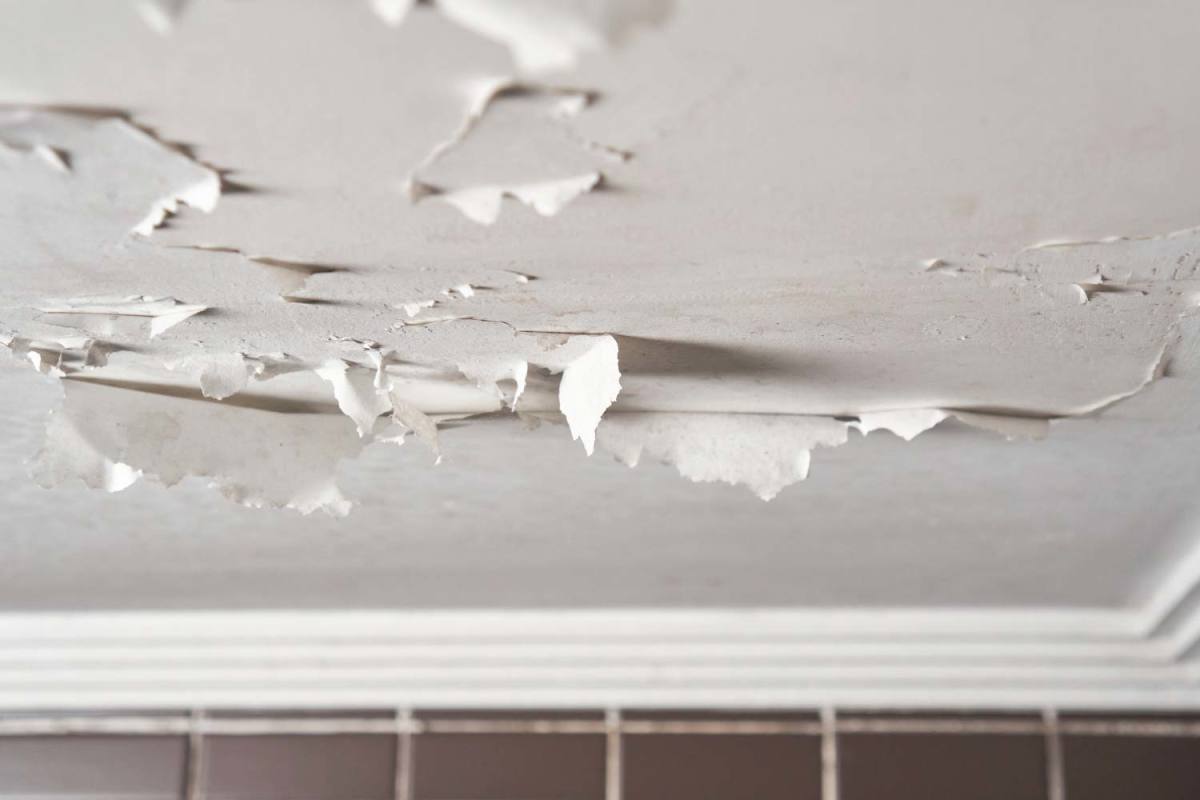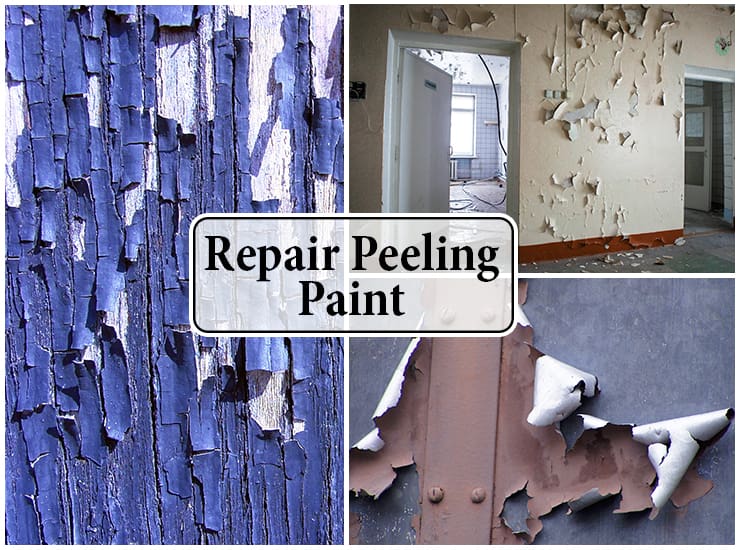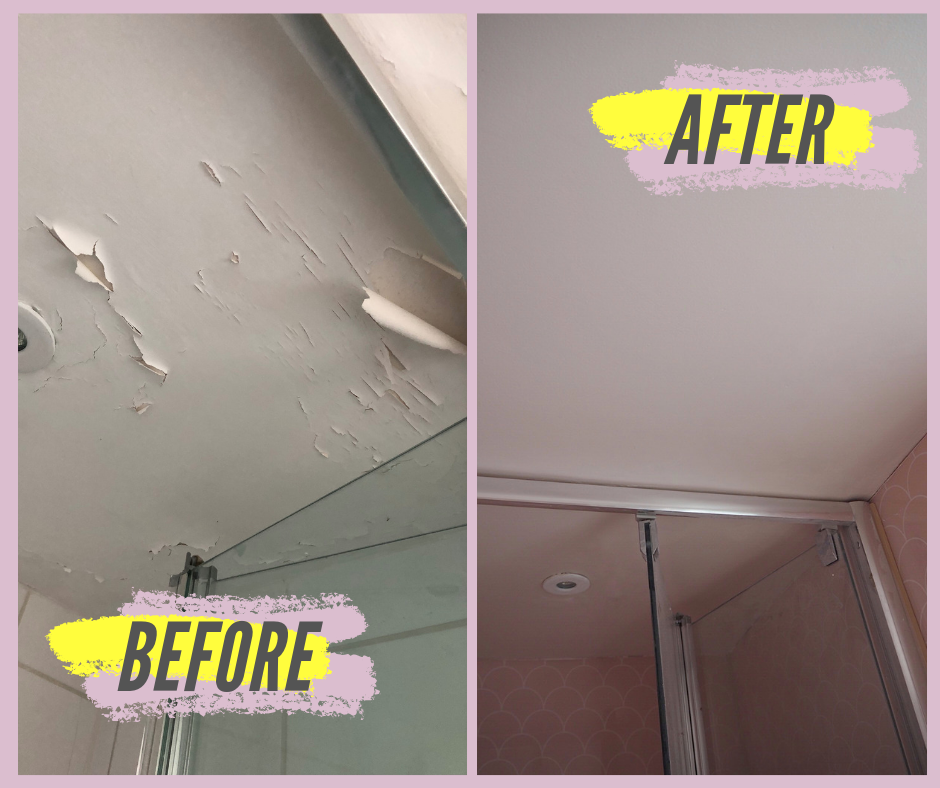Identifying the Cause of Peeling Paint: How To Stop Paint Peeling In Bathroom

The most common reason for paint peeling in a bathroom is moisture. The high humidity levels in bathrooms can cause paint to become damp, leading to peeling. This is especially true if the bathroom lacks proper ventilation. Other factors that can contribute to paint peeling in bathrooms include poor paint preparation, water damage, and improper paint selection.
Understanding the Difference Between Water Damage and Other Factors
Water damage is the most obvious cause of paint peeling in a bathroom. This is because water can penetrate the paint layers and cause them to detach from the surface. Peeling paint caused by water damage often appears in areas that are frequently exposed to water, such as around the shower, bathtub, or sink. It is typically accompanied by other signs of water damage, such as mold growth, warping, or discoloration.
Identifying the Cause of Peeling Paint
Identifying the cause of peeling paint is crucial for choosing the right repair method. A visual inspection of the affected area can help determine the cause. If you notice peeling paint around areas that are frequently exposed to water, it is likely due to water damage. However, if the peeling paint is spread throughout the bathroom or in areas not exposed to water, it could be due to other factors like poor ventilation or improper preparation.
- Check for leaks: Look for any signs of leaks, such as water stains, dampness, or mold growth. If you find a leak, it is important to repair it as soon as possible to prevent further damage.
- Assess ventilation: Bathrooms should have adequate ventilation to remove moisture from the air. If the bathroom lacks proper ventilation, it can lead to high humidity levels, which can cause paint to peel.
- Inspect the paint preparation: Poor paint preparation can also lead to peeling paint. Ensure the surface was properly cleaned and primed before painting. If the paint was applied over a dirty or greasy surface, it may not adhere properly, leading to peeling.
Preparing the Surface for Repair

How to stop paint peeling in bathroom – Before applying fresh paint, it’s crucial to prepare the bathroom surface properly. This involves removing all loose paint, debris, and any other imperfections that could prevent the new paint from adhering correctly. A well-prepared surface ensures a smooth, even finish and a longer-lasting paint job.
Surface Preparation Tools and Materials
A few essential tools and materials are needed to properly prepare the bathroom surface for paint repair:
| Tool/Material | Description | Purpose |
|---|---|---|
| Sandpaper (various grits) | Abrasive paper used to smooth surfaces and remove imperfections. | To create a smooth surface for paint adhesion and remove any rough edges. |
| Scraper | A tool used to remove loose paint, debris, and other materials. | To remove loose paint and debris that could prevent proper paint adhesion. |
| Cleaning supplies (soap, water, degreaser) | Used to clean the surface and remove any dirt, grime, or grease. | To ensure a clean surface for paint adhesion and prevent future peeling. |
| Primer | A specialized paint that helps the new paint adhere to the surface. | To create a bond between the surface and the new paint, preventing peeling. |
Step-by-Step Guide to Surface Preparation
Follow these steps to prepare the bathroom surface for paint repair:
- Remove Loose Paint: Use a scraper to remove all loose paint, peeling areas, and any other debris from the surface. Be careful not to damage the underlying surface.
- Clean the Surface: Wash the surface with soap and water, or use a degreaser if necessary. Rinse thoroughly and allow the surface to dry completely.
- Sand the Surface: Use sandpaper to smooth any rough edges or imperfections. Start with a coarser grit sandpaper and gradually move to finer grits for a smoother finish. Sand in the direction of the wood grain, if applicable.
- Apply Primer: Once the surface is clean and dry, apply a coat of primer. Primer helps the new paint adhere to the surface and prevents peeling. Apply primer according to the manufacturer’s instructions.
Applying the New Paint

Once the surface is properly prepared, it’s time to apply the new paint. Choosing the right type of paint, using proper techniques, and allowing sufficient drying time are crucial steps to ensure a durable and attractive finish.
Choosing the Right Paint, How to stop paint peeling in bathroom
The type of paint you choose will depend on the specific needs of your bathroom. For example, if you have high humidity, you’ll need a paint that is mildew-resistant and moisture-resistant. Consider these factors when selecting your paint:
- Durability: Bathroom surfaces experience a lot of moisture and wear, so choose a paint that is durable and washable. Epoxy or acrylic paints are good choices for bathrooms.
- Moisture Resistance: Look for paints that are specifically designed for high-moisture environments. These paints will resist mildew and mold growth, ensuring a longer-lasting finish.
- Color: Choose a color that complements the overall style of your bathroom and is easy to maintain.
Applying the Paint
Applying the paint properly is essential for a smooth and even finish. Here are some tips:
- Use a High-Quality Paintbrush: A high-quality paintbrush will help you achieve a smooth and even finish. Choose a brush with soft bristles and a comfortable grip.
- Apply Thin Coats: It’s better to apply multiple thin coats of paint than one thick coat. This allows the paint to dry evenly and prevents it from cracking or peeling. Wait for each coat to dry completely before applying the next.
- Avoid Brushstrokes: Use smooth, even strokes to apply the paint. Avoid overlapping strokes or applying too much pressure, which can cause brushstrokes to show.
- Allow Sufficient Drying Time: Allow each coat of paint to dry completely before applying the next. Check the manufacturer’s instructions for the recommended drying time.
Achieving a Smooth and Even Finish
A smooth and even finish is essential for a professional-looking paint job. Here are some tips to achieve this:
- Sanding: Lightly sand the surface between coats of paint to smooth out any imperfections. Use fine-grit sandpaper and work in a circular motion.
- Primer: Applying a primer before painting can help create a smoother surface and improve the adhesion of the paint. Choose a primer specifically designed for bathrooms.
- Rollers: For larger surfaces, a roller can help you apply the paint quickly and evenly. Use a high-quality roller with a nap that is appropriate for the surface you are painting.